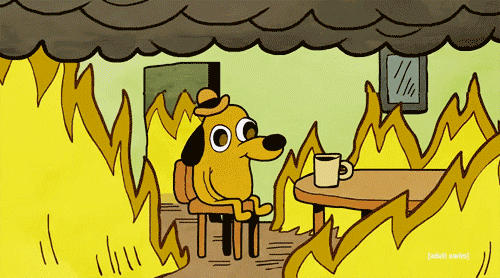-
Posts
26905 -
Joined
-
Days Won
110
Everything posted by olyclimber
-
if you mean by Bruges, a pit in Kurt's basement, yes.
-
wouldn't we all. its just finding a measure we can agree on that would be tough. however, my unique point of view as Ulysses's dad makes me an excellent judge.
-
actually its a dog...in a trench coat.
-
maybe we can take all the kids up DH/lovin arms. but seriously, anyone have issue with taking your kids out of the country...like custody type situations? i don't know about such thing, never had to deal with that type of thing. i would be down for squamish...how many can make it on THAT weekend up there.
-
good catch. another spelling error from kevin bone.
-
"volunteer escort service!!!" DADDY LIKES JvSfFOJO9e0
-
for that euro guide perspective read the forward to Gaston Rébuffat's Starlight and Storm.
-
ha! i was thinking the same thing when i saw that!
-
rationally speaking, its the ones with a house in Magnolia that really bother me.
-
Gym climbing has unquestionable value in terms of developing face climbing technique, as well as fitness and strength. But there is over 100 years of alpine climbing (i.e. – trad) history that was played out before the existence of indoor gyms. While starting one’s climbing apprenticeship in the gym is certainly one way to go, I’m not sure why anyone would be dogmatic about this approach. Safe rope management and belaying skills can be learned anywhere. If alpine climbing is at the heart of one’s interest, why not start by going straight to the mountains, and immediately shape the gym in your mind into what it really is- a place for physical training. The gym otherwise conditions your mind in a number of ways, some of which may require “unlearning” when you shift to the mountains. Gym climbing and sport climbing focus almost solely on the technical difficulties and mechanics of climbing; these are important aspects of climbing but they are often secondary in alpine climbing. Among other things, gym climbing does little to develop situational awareness. This shouldn’t come as a surprise. The old school approach of yesterday was that the older climbers would mentor the younger climbers, and the knowledge of the mountains was passed down from one generation to the next; that style is largely vanishing. The trend in climbing over the past few decades has been towards individualism- teach yourself, then (maybe) teach others. The advent of commercialism in guided expeditions has further helped to stigmatize the idea of hiring a guide to learn the ropes, and the proliferation of detailed guidebooks removes some of the mystery that otherwise would prompt a greater level of preparedness, while leaving all of the hazards; ego and ambition, while certainly not new to climbing, have become all too prominent tools for measuring one’s readiness for the next challenge. The “apprenticeship” in alpine climbing if it exists has to an extent become a function of surviving these forces and, hopefully, a delayed development of humility and respect for the mountains and a more realistic assessment of one’s strengths and weaknesses. All of this gives potential for a more dangerous learning curve, as well as creating an armada of self-taught “instructors” who probably don’t even realize they are teaching unsafe methods. I don't mean to overgeneralize as there are plenty of exceptions to the above, nor do I intend to convey cynicism. The above trends just tend to speak louder when they are observed in practice. I think if you don’t take someone’s ignorance personally, then the attitude you convey will be of genuine concern and respect, and they will listen to what you have to say. thanks mark.
-
so what do you do if you don't rationalize ? you don't actually use rational thinking, do you? how zen. and liberal.
-
Hell yeah John! Some day some year some time would love to head over to Sawtooths with you. Love that overhanging rappel.
-

[TR] Southern Pickets - E Ridge Inspiration, Chopp
olyclimber replied to Steph_Abegg's topic in North Cascades
congrats Steph. i love your photographs! -
i'd love to go up to squamish, but what is the group camp situation up there? more over, i'd like to have an adult ropeup like event up at squamish..just don't know the availability of camping. anyway, any one of you CAN step up and get us a group camp somewhere up by leavenworth i can pay for the campsite as i mentioned before.
-
but that is a rationalization! because its like your opinion man, and we all know opinions are rationalizations. for some people at least! what would be better is an irrationalization. we've seen plenty of that from the RIGHT WING FUCKNUTS. its like when you use fuzzy math...facts are just things people bring up to confuse voters into supporting LEFT WING COMMIE PINKO HIPPOCRITS. but i find it funny that rationalizations might be construed as a negative thing. i guess they are when they are contrary to your opinion.
-
no but lived in a half built house/double wide without running water/electricity/phone/indoor plumbing for first 16 years. if that is all you know it isn't a big deal...it wasn't till i started going to my friends house and i saw how they lived that i realized how my parents deprived me of modernity. then we finally got a phone, but it was a shared line with the neighbors who had just moved up from san diego so you would pick up the phone and hear them talking all the time. the camping on the river for the summer i remember because there were 6 kids in our family at that time and we were living in a 75 squarefoot little camping trailer. most of the time we slept a tent though. it wasn't bad...i don't think it would have been a pleasant winter though.
-
whatever rudy. my kid is better than your kids.
-
lived at the Duckabush campsite for a summer growing up right after starting 1st grade. living on the river was sweet.

